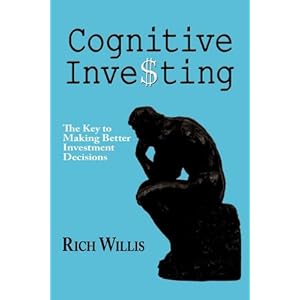|
Median |
Average |
Cumulative |
Probability of Price Increase |
|
| Daily |
0.5% |
0.8% |
0.04% |
53% |
| Monthly |
2.6% |
3.4% |
0.8% |
62% |
| Quarterly |
4.2% |
5.6% |
1.9% |
66% |
| Yearly |
15.3% |
17.8% |
11% |
79% |
This data set applies to the Vanguard Index Trust 500 mutual fund for the 24-year time period between January 1, 1988 and December 31, 2011. This data set takes into account dividends and is “investable,” unlike market indexes. The performance mirrors the S&P 500 index, with a small drag due to expenses.
The median percentages listed are the answers to the question, “On a daily/monthly/quarterly/yearly basis, what is a typical amount of price fluctuation?” The median is the level at which half the amounts are higher and half are lower.
The average percentages answer a similar question, “On a daily/monthly/quarterly/yearly basis, what is the average amount of price fluctuation?”
The median and average columns measure only the net amount of change for the period: direction is not considered.
The cumulative column answers the question, “What is the average cumulative gain for a day/month/quarter/year?” The cumulative percentages take into account that markets move both up and down and that such moves frequently cancel out earlier movements.
The cumulative column calculates an arithmetic average of all daily/monthly/quarterly/yearly moves. This is not the same as a geometric or compound average, which is what an investor would realize if he owned the security for the whole time period. This distinction can be clarified by an example. Let’s say the market goes up 50% one year and down 50% the next. A simple arithmetic average of these percentages is zero. But an investor who experienced a 50% increase, then a 50% decrease would suffer a 25% loss from his original investment. Geometric (also called annualized or compound) averages will always be lower than an arithmetic average unless all the component percentages are the same (in which case the geometric and arithmetic averages would be equal).
The geometric or annualized return for the 24-year period was 9.25%, which is lower than the 11% arithmetic average.
The column entitled “probability of price increase” answers the question, “What is the chance the market will go up over the next day/month/quarter/year?” Note that as the time period lengthens, the probability of a rising price increases.
The percentages listed in the table should be used as a guide to understand the scale of typical market fluctuations. It is not a prediction of future market behavior. The data apply only to a single data set, which is somewhat, but not totally representative of the entire investable universe. Different securities will behave differently. For example, I would expect a bond fund to not fluctuate nearly as much as a stock fund. Likewise, a more volatile stock market ETF, such as an emerging markets ETF, or an individual stock would be expected to fluctuate more than percentages published on this chart.
This chart answers some questions investors should ask themselves, but usually don’t. One example is: “How much fluctuation is typical for a single year?” The answer is between 15% and 18%, depending on whether the median or average (mean) is more relevant. As is typical with many stock market statistics, the average is higher than the median. This is caused by a few occurrences when markets stray far from the norm, which skews the average in that direction more than the median.
An interesting observation is that the average daily fluctuation (0.8%) is equal to the average cumulative gain for a month. In other words, a single day’s fluctuation accounts for the aggregate amount of movement in a typical month. So if a month has 21 trading days, one day is meaningful and the other 20 are just ups and downs that cancel each other out entirely. Now if we only knew which day that was in advance…
